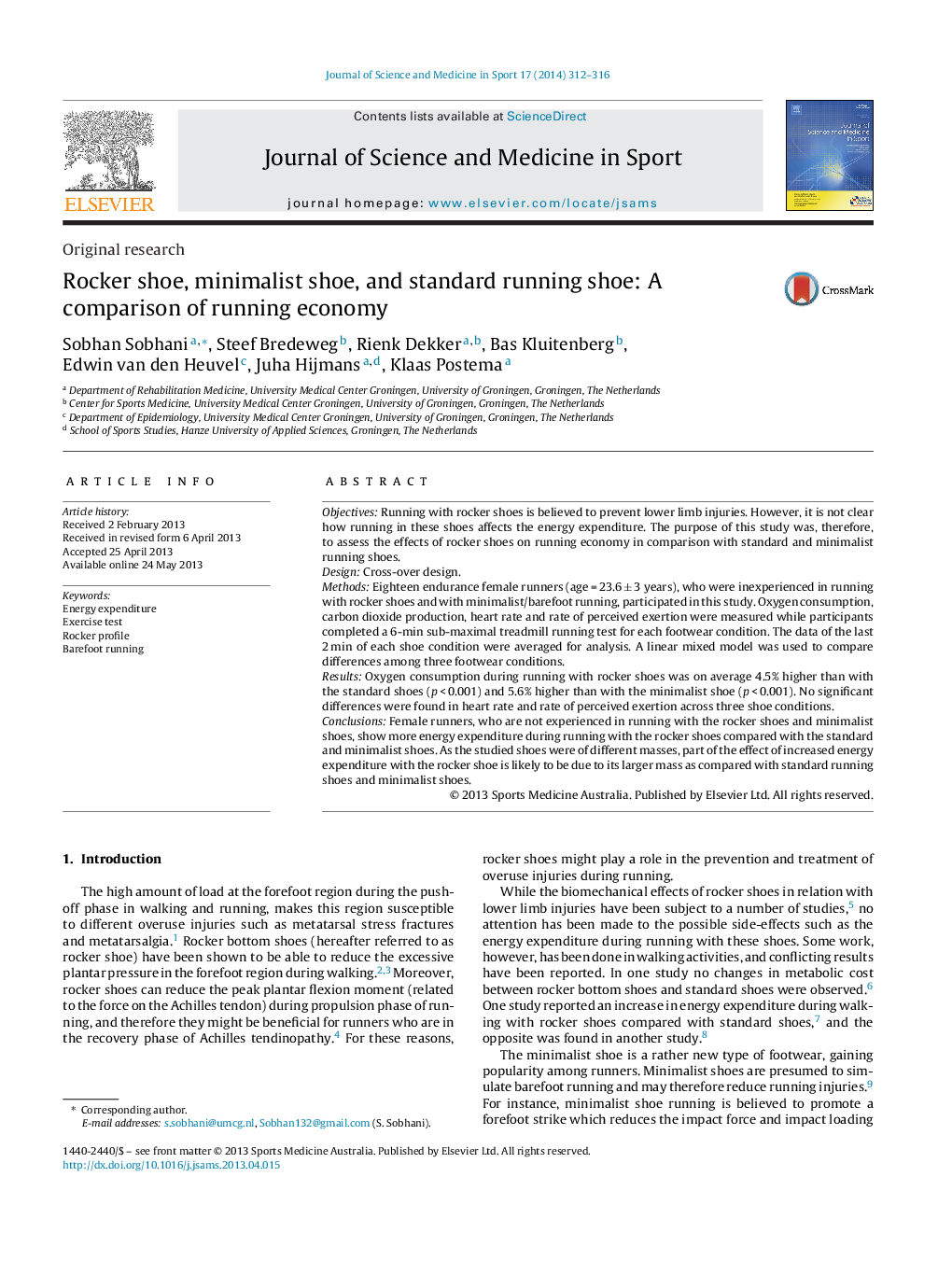| Article ID | Journal | Published Year | Pages | File Type |
|---|---|---|---|---|
| 2707716 | Journal of Science and Medicine in Sport | 2014 | 5 Pages |
ObjectivesRunning with rocker shoes is believed to prevent lower limb injuries. However, it is not clear how running in these shoes affects the energy expenditure. The purpose of this study was, therefore, to assess the effects of rocker shoes on running economy in comparison with standard and minimalist running shoes.DesignCross-over design.MethodsEighteen endurance female runners (age = 23.6 ± 3 years), who were inexperienced in running with rocker shoes and with minimalist/barefoot running, participated in this study. Oxygen consumption, carbon dioxide production, heart rate and rate of perceived exertion were measured while participants completed a 6-min sub-maximal treadmill running test for each footwear condition. The data of the last 2 min of each shoe condition were averaged for analysis. A linear mixed model was used to compare differences among three footwear conditions.ResultsOxygen consumption during running with rocker shoes was on average 4.5% higher than with the standard shoes (p < 0.001) and 5.6% higher than with the minimalist shoe (p < 0.001). No significant differences were found in heart rate and rate of perceived exertion across three shoe conditions.ConclusionsFemale runners, who are not experienced in running with the rocker shoes and minimalist shoes, show more energy expenditure during running with the rocker shoes compared with the standard and minimalist shoes. As the studied shoes were of different masses, part of the effect of increased energy expenditure with the rocker shoe is likely to be due to its larger mass as compared with standard running shoes and minimalist shoes.
